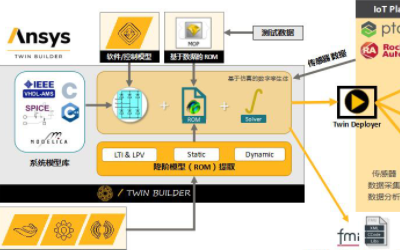China residential gateway shipments surge with Multimedia Service
Shipments of Residential Gateways (RGs) in China are set to more than triple from 2009 to 2013 as the nation's telecommunications carriers look to these platforms to enable the delivery of compelling new services for fiber networks, according to iSuppli Corp.
Shipments of RGs in China are set to rise to 16 million units in 2013, up from 4.5 million in 2009. Next year will be particularly strong, with shipments more than doubling to 11.4 million in 2010, as sales of ADSL2+ and VDSL2 RGs soar.
"Carriers need RGs to enable the delivery of services that will generate sufficient revenue to
justify investments in new Fiber-To-The-X (FTTX) networks," said Loren Zhao, industry analyst, China Research for iSuppli. "If end-user experiences with FTTX networks aren't compelling, than the fiber build outs will have been for naught."
RGs represent a low-cost replacement for standalone ADSL modems. All signs point to carriers moving from modems to RGs as the revenue opportunity is much greater. This is mostly due to RGs providing an advanced service pipeline that has not been realized.
iSuppli expects less than 10 percent of ADSL2+ Customer Premises Equipment (CPE) will be offered as RGs in 2009. However, with the price of ADSL2+ RGs decreasing closer to ADSL2+ modems, iSuppli expects ADSL2+ RGs will replace ADSL2+ modems in the new broadband subscriber market.
EPON RGs will begin shipping in 2010. Shipments of EPON RGs are expected to reach 80,000 units by 2013. iSuppli forecasts VDSL2 RGs also will begin shipping in 2010 with about 56,000 units, but will grow to 109,000 units in 2013.
China's RG market goes back to 2006, when China Telecom rolled out a bundle service brand called My E-Home. My E-Home targeted the family customer and was established as a family information platform. With converged terminals, a combined wired and wireless bound solution for voice services, and an integrated information solution for voice, Internet, value-added and video applications can be offered.
In accordance with the roll out of its My E-Home service in 2006, China Telecom released its first customized RG. The RG will provide POTS-to-Voice Over Internet Protocol (VOIP) conversations, allowing carriers to migrate their circuit-switched subscribers over to their IP networks. Ultimately, this will allow a reduction of the cost of voice while migrating to an all-IP network.
China Telecom's first RG was called E8-A. The E8-A consists of a functional ADSL2+, Ethernet and Wi-Fi network.
China Telecom in 2007 formulated the China Telecom Residential Gateway Specification Version 1.0. The specification was updated to Version 2.0 in 2008 and to Version 3.0 in 2009.
Both RG manufacturers and silicon vendors joined the formation of the specification with China Telecom research Institution in Shanghai. The main OEMs include Huawei, ZTE, Alcatel-Lucent, and Dare. The main silicon vendors include Broadcom, Conexant, Ikanos, PMC and Teknovus.
In 2007, China Telecom rolled out the E8-B RG series with additional USB interfaces that support functional extension from outside of the Internet. China Telecom followed this up in 2009 with an RG called E8-C, which included additional POTS with support for VOIP. The RG E8-C takes on an additional role that is critical for triple-play and quadruple play service, moving the RG closer to the role as the voice center for homes.
As a part of the My E-Home bundle service, the E8-A, E8-B and E8-C RGs were delivered to customers free of charge, as long as the customer signed a contract for Premium E-home services for at least two years.
As the main competitor of China Telecom in the wireline communications market, China Netcom released its Family 1+ service brand that bundles fixed-line, PHS and broadband services. It also provided value-added services such as family gateway, video telephone and video surveillance.
In 2008, China Unicom and China Netcom merged into China United Network Communications Co. Ltd. - the New China Unicom - and subsequently changed the Family 1+ plan from the bundling of wireline, broadband, and PHS services to the bundling of wireline, broadband, mobile services, and other value-added services. With the roll out of Family 1+, China Unicom released its corresponding RG called the GHW series.








